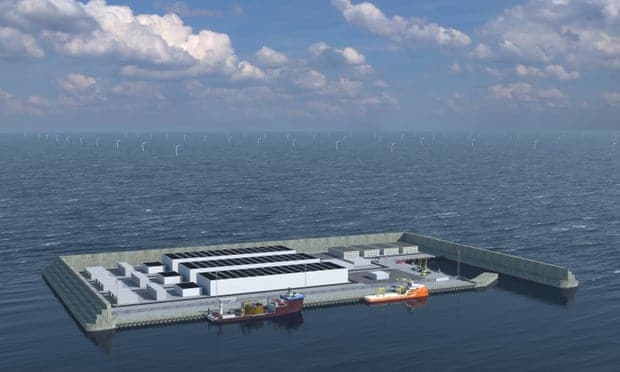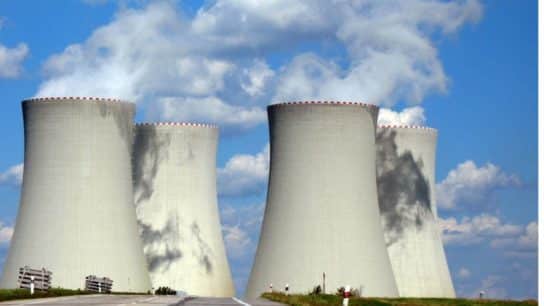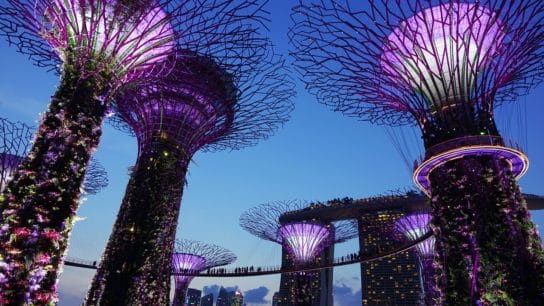Denmark will build an artificial island 80km offshore in the middle of the North Sea to act as a clean energy hub that produces and stores wind energy. The island, equivalent to the size of 18 football fields, will be linked to Danish offshore wind turbines to supply power to 3 million households, as well as to generate green hydrogen for use in shipping, aviation and industry.
—
What is Happening?
- The government of Denmark has agreed to take a majority stake in the £25bn artificial “energy island.”
- The project will have an initial capacity of 3GW, eventually growing to 10GW, and is expected to go online in 2033. However, the parties to the agreement warn that this timeline may mean it might not help Denmark reach its ambitious 2030 target of cutting greenhouse gas emissions by 70% from 1990 levels.
- The facility will feature high sea walls on three sides, as well as a dock for service vessels. The country is also exploring plans to build another artificial clean energy island in the Baltic Sea. The two hubs will initially support 5GW of wind generation and triple Denmark’s current installed offshore wind. The capacity will later be expanded to as much as 12GW.
Energy Minister Dan Jorgensen said at a press event, “This is truly a great moment for Denmark and for the global green transition. The island will make a big contribution to the realisation of the enormous potential for European offshore wind.”
- The approval of the artificial energy island comes months after Denmark announced that it would halt its search for oil and gas in the North Sea. It also coincides with plans by the EU to rely almost entirely on renewable energy within a decade and increase its offshore wind energy capacity 25-fold.
You might also like: China Added Record Wind Capacity to its Energy Mix in 2020
Jorgensen adds, “The 10GW when this is finalised will be producing far, far more clean energy than we can use as a country, so this is part of a strategy to help other countries meet their targets.”
- Construction of the island is expected to start in 2026, with the next five years spent signing up private sector partners, carrying out environmental impact assessments on the sea bed, and signing deals to connect the two energy islands to Belgium, the Netherlands and Germany.
Featured image of a simulation of Denmark’s clean energy island. Photograph: Danish government

















